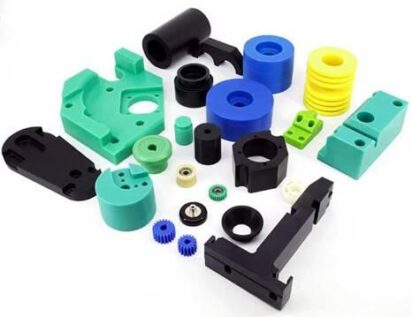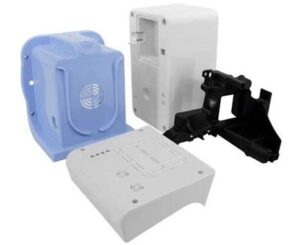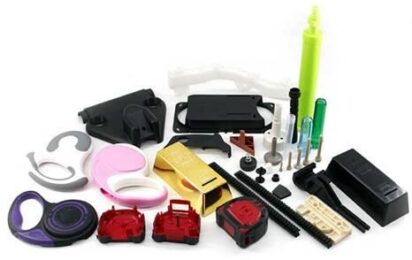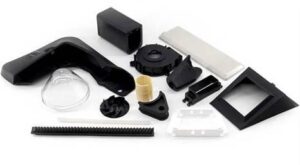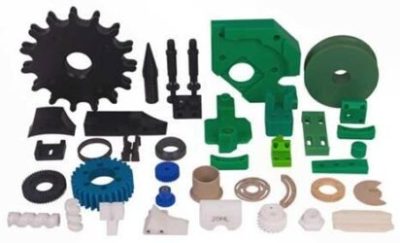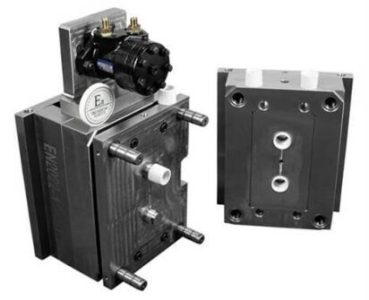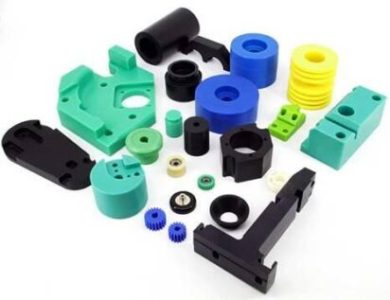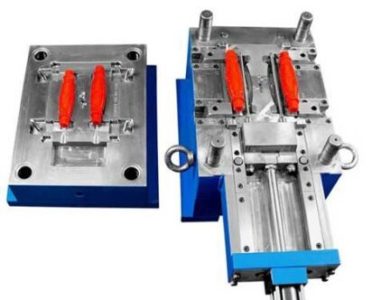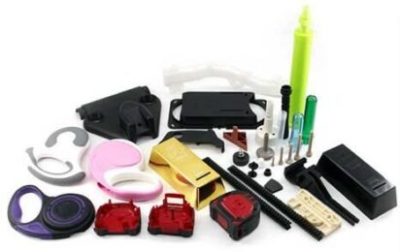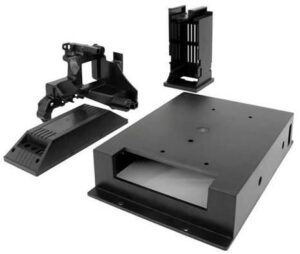What are injection molded products? The molding process and technical requirements of injection molded products.
Injection molding products refer to the process of heating, plasticizing and melting the plastic with an injection molding machine, and then injecting it into the cavity of the molding mold; after cooling, the melt is solidified and then demoulded.
Injection molding is a method of producing shapes for industrial products. Products usually use rubber injection molding and plastic injection molding. Injection molding can also be divided into injection molding molding method and die casting method.
Injection molding machine (referred to as injection machine or injection molding machine) is the main molding equipment for making thermoplastic or thermosetting materials into various shapes of plastic products using plastic molding molds. Injection molding is achieved through injection molding machines and molds.
Application of injection molding products
Plastic injection molding machines have a wide variety of injection molding products and a wide range of applications. Especially in the textile equipment and automobile manufacturing industries, there are various shapes of injection molded products as accessories. Medical equipment, cultural and educational supplies, and various containers, turnover boxes, and shoes that can be seen everywhere in people’s daily life. There are also various complex injection molding structural parts, functional parts and precision parts for special purposes. Injection molding products are widely used in all areas of the national economy such as transportation, packaging, post and telecommunications, komunikacije, construction, gospodinjski aparati, računalniki, aerospace and national defense. It has become an indispensable means of production and consumer goods.
Characteristics of injection molded products
1) Fewer molds are needed to produce injection molded products.
2) The labor required is relatively low.
3) The production efficiency of injection molding products is high.
4) There is very little waste of raw materials during injection molding.
5) The cycle of mold design, manufacture and mold trial is very long, and the production is slow.
6) The start-up investment is large, so it is not suitable for the production of small batches of plastic parts.
7) The quality of injection molding products is limited by many factors, so the technical requirements are relatively high, and it is difficult to master.
Main Types of Injection Molded Products
1. Rubber injection molding: Rubber injection molding is a production method that injects rubber directly from the barrel into the model to fluidize. The advantages of rubber injection molding are: although it is an intermittent operation, the molding cycle is short, the production efficiency is high, the blank preparation process is canceled, the labor intensity is small, and the product quality is excellent.
2. Plastic injection molding: Plastic injection molding is a method of plastic products. The molten plastic is injected into the mold of the plastic product by pressure, and cooled and formed to obtain various plastic parts. There are mechanical injection molding machines specially designed for injection molding. The most commonly used plastics are polyethylene, polypropylene, ABS, PA, polystyrene, itd.
3. Forming injection molding: the resulting shape is often the final product. No further processing is required prior to installation or use as a final product. Many details, such as bosses, ribs, threads, can be formed in a single injection molding operation.
Salary of injection molding workers
Injection molding workers are technical jobs, generally between 7500-15000 (RMB). The starting salary for practitioners with little work experience is around 8,000 (RMB). After having more than 2-3 years of work experience, the monthly salary can reach more than 9000 (RMB).
Process basis of injection molding products
● Purpose, operation and results of temperature, pressure, speed and cooling controls
● How does the adjustment of the injection molding machine settings affect the process and quality
● Optimize screw control settings
● Multi-stage filling and multi-stage holding pressure control; effects of crystallization, non-crystallization and molecular/fiber alignment on process and quality
● Effects of internal stress, cooling rate and plastic shrinkage on the quality of plastic parts
● Plastic rheology: how plastics flow, align and change viscosity, shear and molecular/fiber orientation relationship
● Relationship between gating system, cooling system, mold structure and injection molding process
Problem analysis and solution of injection molding products
Shrinkage, underfull mold, burrs, weld lines, silver wires, spray marks, burnt, warped deformation, shrinkage cavities, cracks/ruptures, dimension out-of-tolerance and other common injection molding problems description and cause analysis. And solutions in mold design, molding process control, product design and plastic materials.
● Reason analysis and countermeasures for the lack of glue around the injection molded parts and the product not being full
● Cause analysis and countermeasures of the edge (burr) of injection molded parts
● Cause analysis and countermeasures of surface shrinkage and shrinkage cavity (vacuum bubble) of injection molded parts
●Cause analysis and countermeasures for silver streak (material flower, water flower), scorching and air mark of injection molded parts
● Cause analysis and countermeasures of water ripples and flow lines (flow marks) on the surface of injection molded parts
● Cause analysis and countermeasures of water lines (weld lines) and jet lines (snake lines) on the surface of injection molded parts
● Cause analysis and countermeasures of surface cracks (cracks) and top whitening (top burst) of injection molded parts
● Reason analysis and countermeasures for surface color difference, poor gloss, mixed color, black stripes and black spots of injection molded parts
● Cause analysis and countermeasures of warping deformation and internal stress cracking of injection molded parts
● Reason analysis and countermeasures for dimension deviation of injection molded parts
● Cause analysis and countermeasures of mold sticking, scratching (strain) and whitening of injection molded parts
● Reason analysis and countermeasures for insufficient transparency and insufficient strength (brittle fracture) of injection molded parts
● Cause analysis and countermeasures of cold material spots and peeling (delamination) on the surface of injection molded parts
● Reason analysis and countermeasures for defective metal inserts of injection molded parts
● Reason analysis and improvement measures for nozzle salivation (runny nose), glue leakage, nozzle drawing, nozzle clogging, and difficulty in mold opening
● Use CAE mold flow analysis technology to quickly and effectively solve injection molding site problems
Ultra-low cost injection molding
① Efficient material engineering:
1. Heatless regenerative dehumidification and drying: more than 50% power saving, environmental protection (no regeneration gas emission);
2. Powerful cleaning of the screw, prevention of black spots
3. Material recycling and reuse, prevention of foreign matter mixing
② High-efficiency and energy-saving projects:
1. Power saving of injection molding machine:
2. Electromagnetic heating of barrel: save electricity by 50%+
3. Thermal insulation coating: coating 3mm, used in any place, saving electricity by 30%+
③ Ultra-short cycle project:
1. Shorten storage period: finished products, semi-finished products, raw materials, defective products, itd.
2. Shorten molding cycle, pulse cooling molding
④ The latest pulse cooling technology and equipment can reduce the mold cooling cycle;
1. The molding technology is improved to reduce the molding cycle. Including: improvement of mold defects/defects of molded products, optimization of molding process, new mold trial and defect improvement, and reduction of defective rate in the project;
2. Shorten working time and fast mold switching
3. The molding process is improved and the working time is shortened. Including: automatic/semi-automatic operation, fast mold switching, manipulator operation, fast switching operation of manipulator, one-person operation for one machine, one-person operation for multiple machines
 English
English العربية
العربية Български
Български 中文(漢字)
中文(漢字) Čeština
Čeština Dansk
Dansk Eesti keel
Eesti keel Suomi
Suomi Français
Français Deutsch
Deutsch Ελληνικά
Ελληνικά עברית
עברית Magyar
Magyar Bahasa Indonesia
Bahasa Indonesia Italiano
Italiano 日本語
日本語 한국어
한국어 Latīna
Latīna Latviešu valoda
Latviešu valoda Lëtzebuergesch
Lëtzebuergesch Polski
Polski Português
Português Română
Română Русский
Русский Slovenščina
Slovenščina Español
Español Svenska
Svenska ภาษาไทย
ภาษาไทย Tiếng Việt
Tiếng Việt
